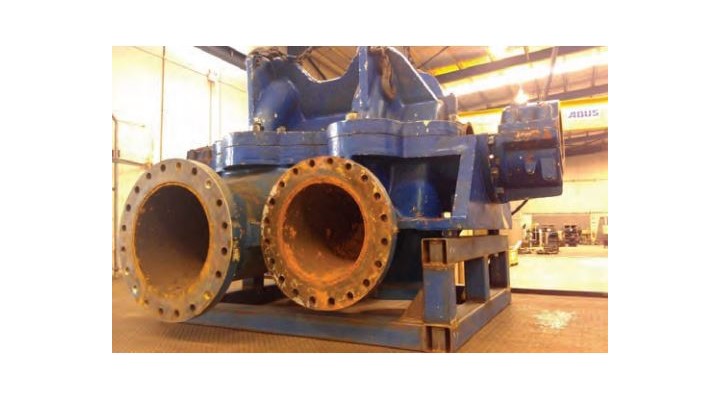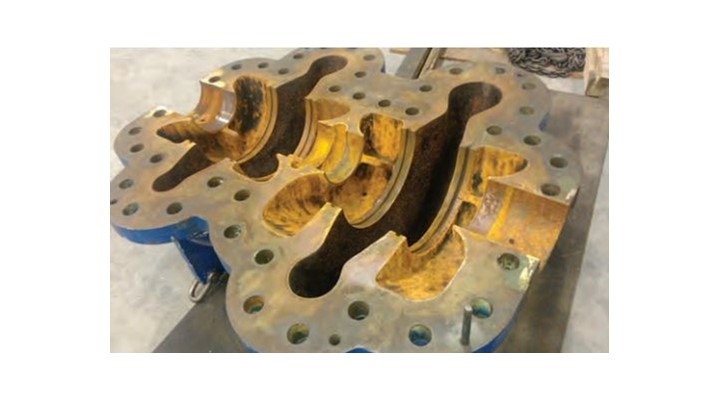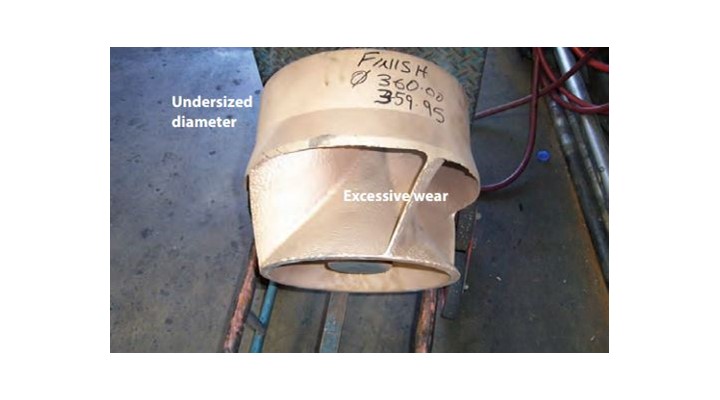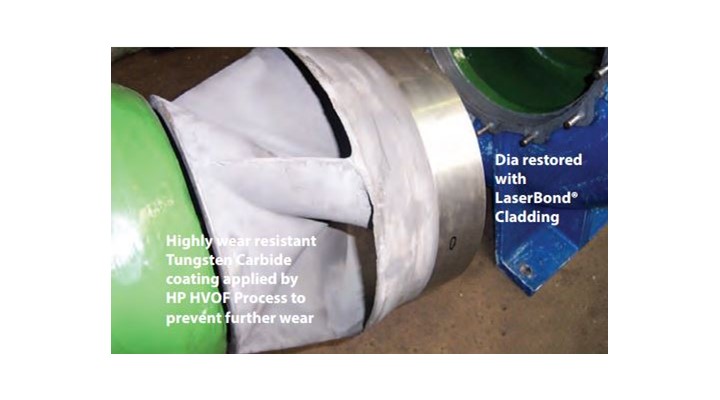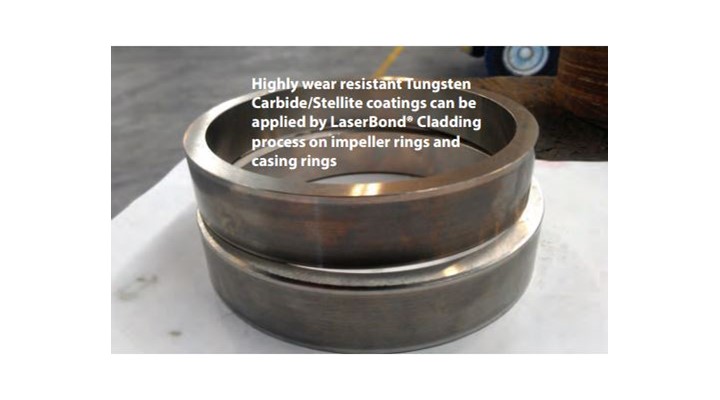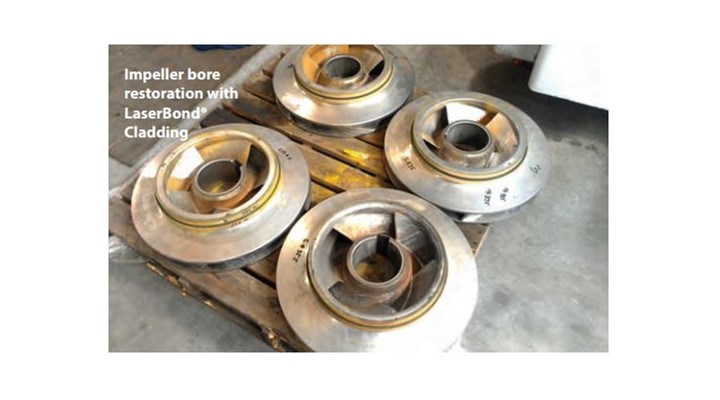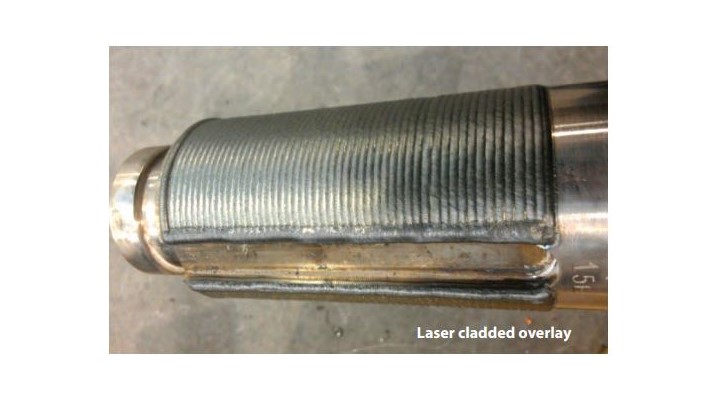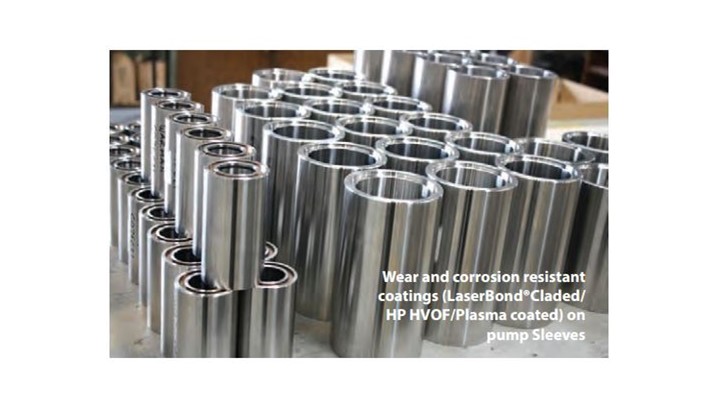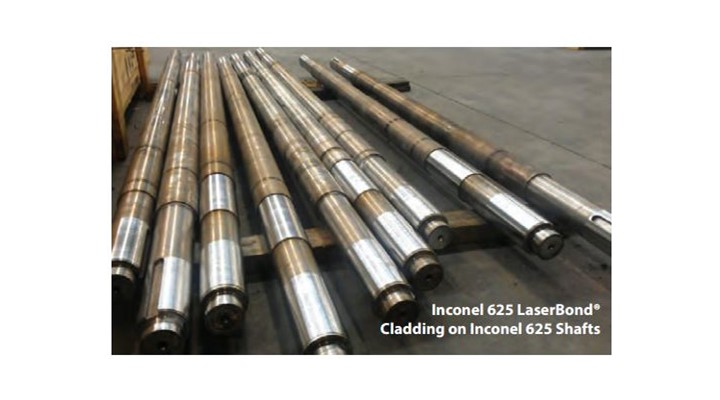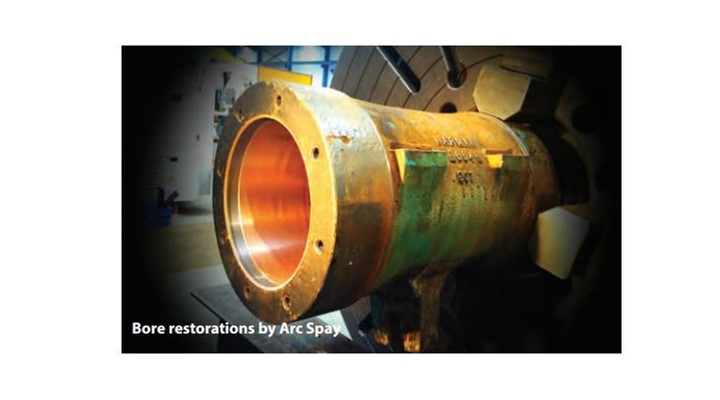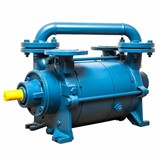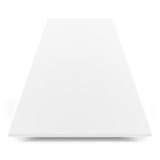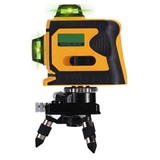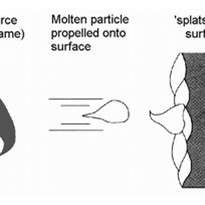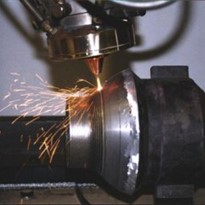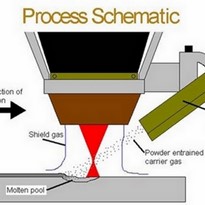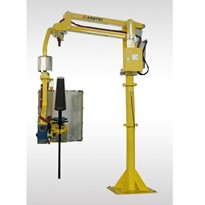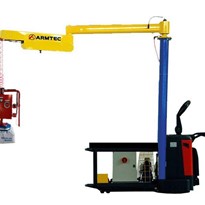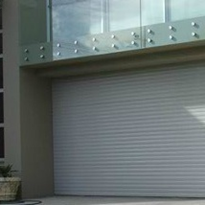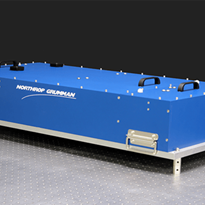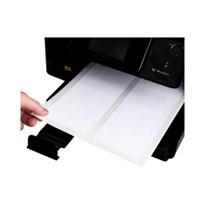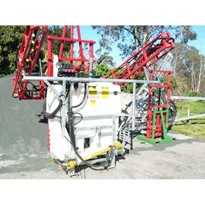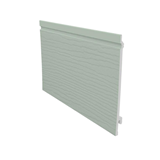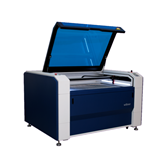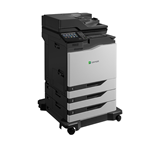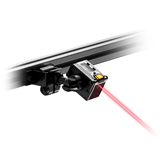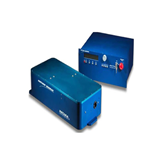Therefore, it is important to find a right solution to minimise the life-cycle cost of maintenance and this is where Surface Engineering plays a vital role. Both Laser cladding and Thermal Spraying (High Pressure HVOF/Plasma/Arc) are effective ways of refurbishing the worn components and surface engineering new components in the pumping industry.
The techniques we use, improve the component's resistance to wear and corrosion, increasing reliability and service life as the overlays applied are of high specification compared to the base material. New components and replacement parts can be surface engineered to provide extended service life in a range of challenging environments such as high temperature, abrasive slurry, acidic/alkaline and sewage.
Laser Cladding
LaserBond® cladding is a process to apply metal coatings using a laser as heat source. The well-focused laser beam melts the base material and an additive powder to create a wear and corrosion resistance overlay.
Unlike thermal spraying or chrome plating, LaserBond® cladding provides a strong metallurgical bond with minimal dilution of the base material,exceptional thickness control, and a small heat effected zone.
The automated laser cladding system ensures the process can be precisely repeated, resulting in a high quality homogeneous coating deposition critical in high demanding environments. As clad material can be varied, critical magnetic and non-magnetic components can be protected with
optimal coatings.
Standard LaserBond™ overlay options include Tungsten Carbide, Stainless Steels, Nickel alloys such as Inconel, and Cobalt alloys such as Stellite. Other materials can be applied on request.
HP-HVOF
The High Pressure High Velocity Oxy-Fuel process applies coating material at supersonic velocities, resulting in surfaces of the highest possible quality and performance. HP HVOF coatings are very dense, very well bonded, and free of the oxides and tensile stresses typically found in coatings produced with other thermal spray processes.
Consequently, they perform better in most service environments. HP HVOF wear resistant coatings are being adopted globally as an environmentally friendly, and technically superior, alternative to Chrome plating on components such as aircraft landing gear. Surfaces combining resistance to corrosion and wear are also routinely applied by HP HVOF.
LaserBond™ approved HP HVOF coatings include Tungsten Carbide, Chrome Carbide, Nickel based alloys (e.g. Inconel 625 and 718), Cobalt alloys such as Stellite, stainless steels and copper based alloys.
Laser Cladding and Thermal Spraying (High Pressure HVOF/Plasma/Arc) applications in Pump Industry
Plasma Spray
Plasma thermal spray is used to apply higher melting point materials such as ceramics/oxides. Applications include high temperature thermal barrier coatings and wear resistant coatings where thermal and electrical resistance is also desired. LaserBond™ approved Plasma coatings include Chrome Oxide, Zirconia, Aluminium Oxide and several other ceramic blends.
Other Thermal Spray Systems
For economical dimensional restoration, Arc Wire and Combustion metal spraying systems are used as appropriate to the technical and economic needs of specific applications. The most commonly applied materials include stainless and carbon steels, nickel alloys, bronzes, and copper.
This technology can also be used to apply coatings for anti-corrosion and traction applications


